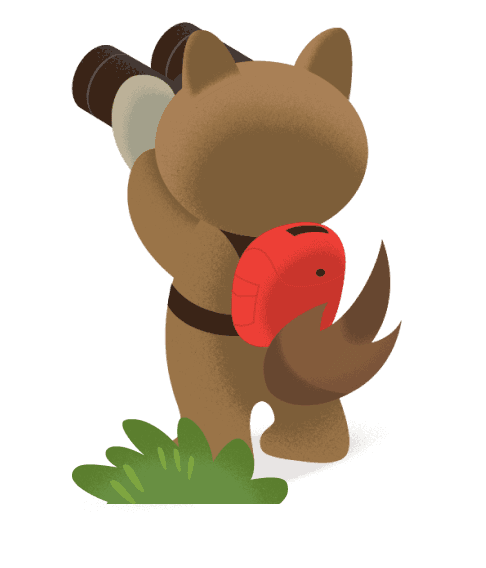3 Ways To Develop a Happier Workforce (And Happier Customers)



Here’s how to help your employees to feel more confident and knowledgeable in their roles, which helps them deliver better customer service.
Looking for a way to delight your customers and improve your service efforts (as well as the bottom line)? Focus on your employees’ happiness. We’ve seen a link between customer experience and profitability — and that all starts with making sure you’ve got a satisfied workforce.
Cultivating a positive and successful employee environment is the foundation for success in service. Ensuring that your customer success and support teams are happy and motivated can provide a better experience for the customers they serve.
Happier employees mean happier customers
Learn more about how to build an effective and motivated customer success team in this episode of Salesforce on Salesforce.



We pulled three of our team’s secrets to help you make your employees happier:
- Drive role clarity and transparency
- Practice deep listening and make good use of your data
- Focus on career and skill development
After all, happy employees make for better customer relationships. Let’s dig in.
1. Drive role clarity and transparency
So, how can you truly empower employees to be successful?
As Salesforce’s Senior Director of Role Strategy, Aisha Kelly-Vong helps employees understand their roles and supports them to get to where they want to be in their careers. She works across the organization on talent strategies and programs to help employees be their most productive, most engaged, and deliver the most value to our customers. Empowered and confident employees help improve the customer experience and profitability.
One way she does this is by using career leveling guides to help team members assess where they are in their careers. A career leveling guide is a set of expectations that define the skills, knowledge, and amount of responsibility for each role. This data is applied to a particular role and associated with that employee level and compensation range.
With these guides, you can continually make sure that employees have clarity in their role. This helps them improve their skills and find ways to grow.
You can also advocate for career path transparency and awareness, to give employees more ownership of their career goals. By giving employees a clearer view of their ideal career path, you can build out a successful journey for them. We do this by asking employees what they think their role entails, the biggest challenge they have in their role, and what they feel the organization needs to do to help.
With this information, you can have employees who are more confident in their roles, which means better customer interactions, ultimately leading to an overall better customer experience.
Do you see the connection between the employee and the customer experience yet?
2. Practice deep listening and make good use of your data
Raise your hand if you like change. No? You’re not the only one.
Change can be an opportunity to strengthen how you run your business. We know change is hard, but without it, we can’t evolve.
How can you do this? Look at your data gained from employee surveys, assessments, and interviews. This can help you make decisions on how to best support your employees and spot potential bumps ahead in the career journey.
At Salesforce, we believe that you need to meet your employees in the moment. To connect employee success and customer success, we need to listen — to everyone.
Scheduling one-on-one calls where teams can be candid and authentic about their role opens a lot of doors for improvement. By letting your employees tell you what they truly want, you can then focus on helping them develop the skills they need to reach their career goals.
You can also practice deep listening to learn more about what your employees really need to succeed. Deep listening is getting in front of employees and asking the right questions to set them up for success. It can lead to the right training and development for an employee to reach new career heights.
3. Focus on career and skill development
With skill and competency assessments, you can help your employees move forward in their career path with your company. They provide a framework for role-specific competencies and give people a clearer idea of what success looks like.
With this data and strategy in place, employees can see what they need to grow and level up in their career goals.
We understand people frequently want a change of pace, the chance to learn new skills, and possibly try new careers. For example, with our job rotation program, we open the doors for employees to try new roles for a period of time.
Starting a similar program at your business can help your employees gain the skills they need with on-the-job experience. When the time is right, they can take those new opportunities head-on and succeed in their new endeavors. This keeps your employees engaged and your costs down on turnover.
If you learn an employee’s skills and align them with the right role, you can set them up for success, make customers happy, and save the organization money.
Education is a key part of helping your employees feel happier and more confident in their roles. For instance, we offer Learning Paths that help employees develop the skills they need to excel in their careers, with the help of a customized plan.
We also encourage employees to earn certifications that validate their role-based expertise. Employees can take Trailhead Academy expert-led classes to build fundamental Salesforce skills and get exam-ready. These expert-led classes and immersive learning programs are also available to Trailblazers, so anyone can build skills and get certified with help from Salesforce experts. This can help improve customer experience and profitability.
Trailhead Academy is available to the public, so anyone can tap into this source of knowledge to help their career.
When we have the knowledge — whether that’s our skill sets, our future career path, or how we treat our customers — we are more productive and efficient.
Improved customer experience and profitability starts with happy employees
If you want your customers happier, create a plan to make your employees happier.
There’s a lot we’ve learned over the years. That’s why we created our Salesforce on Salesforce series, to give you a peek behind closed doors. From marketing to service to sales operations and more, we share the tricks of the trade that have helped us become the world’s fastest-growing enterprise software company.
And as always, check out Trailhead to learn how to build an effective customer success team — from employee retention strategies to cost savings initiatives.
Remember, retaining employees means cost savings for you. And if you can lean into data, use the right tools, and establish skills and competencies, you can grow successfully, together.
Stay updated with Salesforce on Salesforce
Get a behind-the-scenes look at how Salesforce uses our own solutions to create easy and expert service for more than 150,000 customers.































